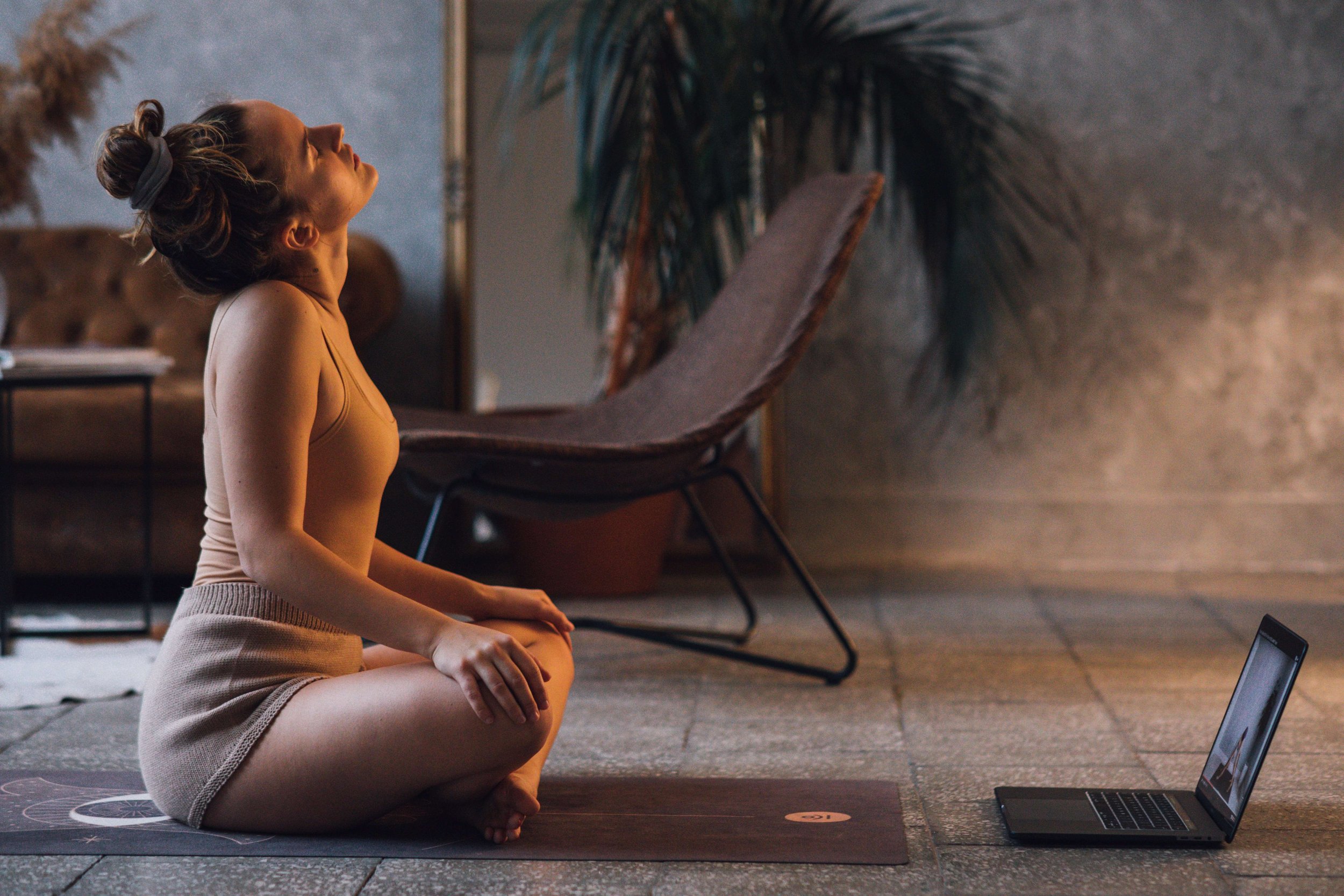5 Steps to Achieve Your Yoga Goals Through Mindset Shift
Do you question why you aren't seeing progress despite putting in the effort?
Welcome to the world of yoga, where progress is personal, and consistency is key.
Whether you're a seasoned practitioner or beginning to tip your toes into yoga practice, there are times when progress may seem slow or non-existent.
You may doubt your abilities or question if yoga isn’t meant for you. The good news is progress in yoga is not a uniform concept.
Yoga practice has always been subjective, personal, and all about finding what works for you.
In this blog post, we'll explore what mindset shifts you need to make to see improvements in your yoga practice.
Yoga, Your Way: How Personal Preferences and Consistency Help You Reach Your Goals
There are many styles of yoga practice at your disposal. Vinyãsa Flow, Hatha Yoga, Jivamukti Yoga, Hot or Bikram Yoga, Ashtanga Vinyãsa Yoga, Restorative/Yin Yoga, and more.
When choosing one particular style of yoga practice, try as many as you can to get the feel for what resonates with you the most.
Each yoga style brings its own unique set of benefits, making them complementary to one another.
Regardless of your chosen type, it all comes down to your internal & personal preferences;
class pacing
intensity
length of class
technical focus
playlist, and many more
All play the role whether or not yoga class and the particular yoga style starts to develop relationship you can embellish.
In order to reach your goals with yoga, you need to shift your mindset around consistency and repetition.
Yoga practice is a personal journey, it's therefore important you figure out what works best for you.
Make it a regular part of your routine.
Creating a consistent yoga practice doesn't have to mean lengthy, time-consuming sessions.
In fact, a short but well-rounded yoga class can offer equal benefits to your well-being.
So, how can you make yoga a regular part of your daily routine?
1. Adjust Your Expectations
When you take a break from something for a prolonged period, it can be challenging to get back into the rhythm of things.
I understand that building momentum and consistency when it comes to changing your habits can be challenging.
It can also be incredibly frustrating when you feel like you're doing everything 'right', yet still not seeing the desired results.
However, when you adjust your expectations to fit a busy schedule, it becomes easier to remain consistent and intensify the practice when life settles back into a routine.
It's important that you are being flexible and realize that practice doesn't have to take place at the same time.
The key to achieving your goals lies in taking action.
This takes overcoming your tendency to procrastinate, and consistently show up.
“If you approach your yoga practice with an open mind, you may be surprised by the unique experiences that unfold each time you step onto the mat.”
2. The Power of a Few Minutes: Consistency in Yoga Practice
Rather than emphasizing the length of each session, focus on making minor, realistic & manageable adjustments to your routine.
This will help you to create a sustainable habit.
By making your yoga practice a manageable part of your daily routine, one that you enjoy, you get to experience the transformative effects yoga can have on your life.
It's all about finding what works for you and your schedule.
Even a 10-15 minute yoga practice can make a big difference in your feelings.
So don't be afraid to break up your practice into shorter sessions if that works!
“Remember, the journey of yoga is personal one. By focusing on your growth and progress, you can unlock the full potential of this transformative practice.”
3. Maintain a Home Practice
Show up consistently and take advantage of the time available, even if it's only for a short practice.
Sometimes finding the time for a full-length yoga class can be challenging.
At home, shorter practices can be just as effective in helping you to stay connected and improve your desired results.
In fact, shorter yoga practices can help you to establish a regular yoga routine and make your practice more sustainable in the long term.
It's important to find a class that supports your goals and helps you to develop the skills you need.
A good yoga class should have clear learning objectives, so that you know what you are working towards.
It should also offer continuity, so that you can build on what you have learned from one class to the next.
It's important to remember that progress in yoga is not always linear, and it can take time to develop the strength, flexibility, and mindfulness that you need to deepen your practice.
So, don't rush the process!
Take your time, be patient with yourself, and enjoy the journey.
Focus on learning the fundamentals and building a strong foundation for your practice, rather than rushing ahead to more advanced poses.
With time and consistent effort, you will find that your practice deepens naturally, and you will enjoy all the benefits that yoga has to offer.
4. Mindset of Repetition
Let me ask you this: "Every time you step on the mat with no expectations, allowing for the experience to unravel, wouldn't the same sequence deliver new and different feel of body & mind?"
Achieving your goals in yoga requires time, consistency, and follow-up. This can be done by developing a habit that comes from repeated practice.
A yoga class that’s repeated over a short period can provide you with clarity, balance, consistency, and safety.
It fosters growth and helps you to develop technique or learn new skills.
Consistency allows for a deeper understanding of the basics and the mechanics behind postural work. It offers you both, newness and time for mastery.
Therefore, embrace repetition to grow and evolve as a yoga practitioner.
You can develop a sustainable habit that improves your practice and achieves your goals.
5. Let Go of the All-Or-Nothing Mentality
Focus on what's enough to feel good.
A brief practice can be valuable if it helps you stay connected, grounded, and present.
The notion that more is always better is no longer relevant.
Even a brief yoga class format can provide you with a fulfilling experience.
Prioritizing quality over duration gives you consistent results.
Sometimes all it takes to find your rhythm is a little structure.
In yoga, when you are given a structure, it helps to find your rhythm & assists in establishing a comfortable pace and flow during the practice.
Start by creating a habit you look forward to by being on a mat.
Don't feel obligated that you need to stick to a traditional yoga class format, with sessions lasting 60/75, or 90 minutes, to benefit from the practice.
What's more important is that you start & stay consistent.
One way to create a regular practice is by taking advantage of shorter yoga sessions and recognizing the value of the available time.
Rather than focusing on the length of a yoga class, prioritize one that offers well-defined learning objectives. This will help you to gain new skills, build solid foundations & refine technique.
Reaching your goals with yoga requires consistency, repetition, and realistic expectations.
By finding the style of yoga that resonates with you, making manageable adjustments to your daily routine, and maintaining a home practice, you can experience the transformative effects of this practice on your physical, mental, and emotional well-being.
“When measuring progress in yoga, remember that progress is subjective and personal. It may manifest differently for each individual, depending on your goals and aspirations. After all, don’t we all aspire to experience a sense of progress in our overall well-being and connection to the practice?”
A FREE 5-Day Yoga Series for Women 40+ Who Want to Find Calm—Even with Limited Time.
Step away from the noise!
This 5-day yoga series offers quick and effective practices designed to provide relief and quiet your mind when you need it most.
Learn how a quick, simple yoga practice can help you find mental clarity and calm, even on your busiest days.
Whether it’s just a few minutes at the end of your day or a quick break in the middle of the chaos, this series is like a 'glass of water,' helping to quench your thirst for calm.





